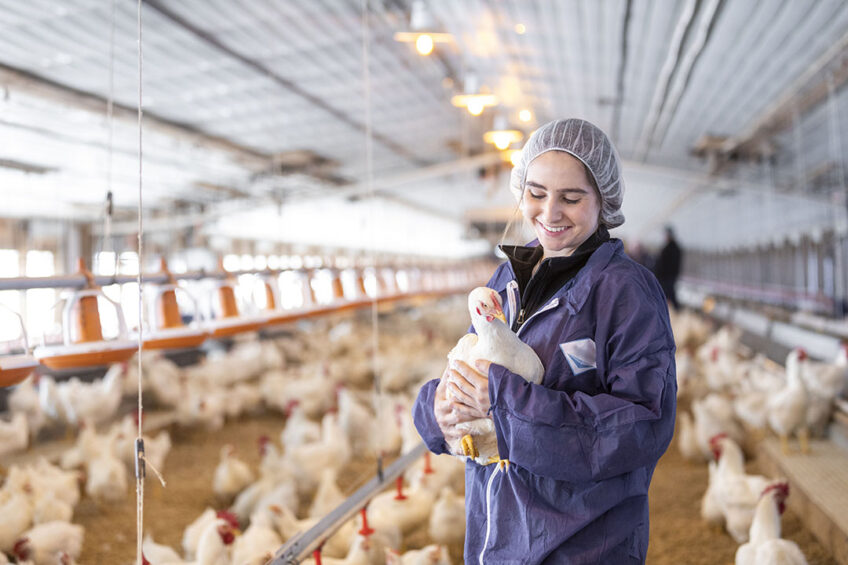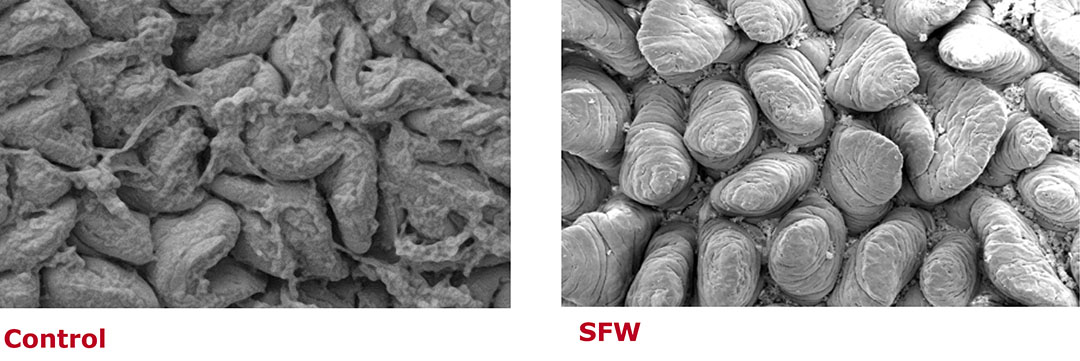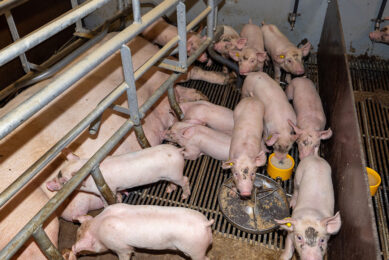How do we define optimal gut health?

The ability of the animal to reach its full potential depends on its ability to efficiently utilise feed, defend itself against pathogens and maintain a diverse microflora. It helps us to shape the definition of optimal gut health.
Part of the Gut Health 2022 Special
When considering the elements that create the foundation for optimal gut health, we can break them down into 3 fundamental components: nutrient absorption, microbial diversity and strong immunity. These defining elements work synergistically to ensure that animals have everything they need for improved performance, welfare and natural defences.
Nutrient absorption
Up to 75% of production costs are from feed. With added pressure from rising raw material and energy costs, animals must digest and absorb feed efficiently. The amount of nutrients absorbed from feed depends on many factors:
First, large, insoluble feed molecules must be broken down into small, soluble molecules that can be absorbed. Optimal enzyme activity (affected by gut pH) enhances the nutrient release from feed, maximising energy and the nutrients available for absorption for maintenance and growth.
For optimal feed efficiency, nutrients must be nutritionally available and of good quality, the gut environmental conditions must be conducive to enzyme activity, and the gut structures must be well-formed to allow for optimal absorption.
Once nutrients can be absorbed, the rate at which they can be absorbed depends on the integrity and surface area of the gut. Pathogens damage the gut, reducing surface area, nutrient absorption and performance. The surface area is increased by villi, which are protected from pathogens by mucus secreted by goblet cells and a diverse microbiome.
Microbial diversity
A stable and diverse microbiota, along with the mucus layer, helps to control pathogens, such as Salmonella, Campylobacter, Clostridia, E. Coli, etc., enhance nutrient digestion and absorption, and maintain the gut’s integrity.
It is vital for food safety, helping to prevent pathogenic adhesion and proliferation, leading to reduced pathogen load. Reducing pathogen load lessens the risk of transfer to humans. It can also reduce the need for antibiotic intervention and improve the sensitivity of bacteria to antibiotics, therefore decreasing the abundance of antimicrobial resistance.
Enhancing and maintaining microbial diversity is dependent on many factors:
Reducing the pH in the gut environment can promote beneficial bacteria and deter harmful bacteria.
A balanced and diverse microbiome increases competition for space and nutrients. It can stimulate immune systems by producing metabolites and SCFAs, which also have antibacterial effects, and be used as an energy source by the gut.
If the microbiome becomes imbalanced, the gut becomes vulnerable to a build-up of pathogens (colonisation), resulting in damage compromising absorption, as well as increased pathogen load, leading to a food safety issue. It is, therefore, vital to support a diverse microbiome by promoting the growth of beneficial bacteria and weeding out pathogenic bacteria.
Strong immunity
The gut is a vital part of the immune system. Good gut health is essential for strong immunity, maintaining natural defences and minimising disease outbreaks through enhancing the gut barrier function.
Animals have 3 lines of immune defence, which fall under 2 categories:
Innate immunity: The non-specific system an animal is born with that makes up the first and second line of defence.
Acquired immunity: A specific cellular and molecular response to a particular pathogen developed during the animal’s life, which forms the third line of defence.
These systems aid in protecting and maintaining animal health, working together to defend against pathogens.

The gut epithelial, mucus layer and microbiota act as a barrier between the internal and external environment as part of the first line of defence. The gut microbiota can also help activate the second and third lines of defence. The second line of defence helps to fight pathogens via phagocytic leukocytes engulfing foreign bodies, releasing cytokines and antimicrobial proteins. It also suppresses microbial growth through fever. The first and second lines are innate immunity, whereas the third line is acquired immunity and includes B-cells, T-cells and antibodies. It is possible to improve the physical barrier against pathogens, decrease AMR, induce a faster immune response to pathogens and lower disease prevalence through the diet and microbiota.
Implementing an holistic approach
The 3 defining elements of optimal gut health are intertwined. Each delivers an independent benefit to the animal, helping to support performance, welfare and natural defences. However, these elements also feed into one another, meaning optimal gut health cannot be achieved without all three.
Therefore, a holistic approach, embracing and promoting each of these components, must be implemented to establish a healthy gut. Only then can we form an optimised foundation for sustainable performance and profitability in animal production.
 Beheer
Beheer





 WP Admin
WP Admin  Bewerk bericht
Bewerk bericht